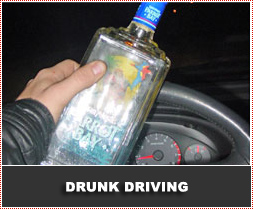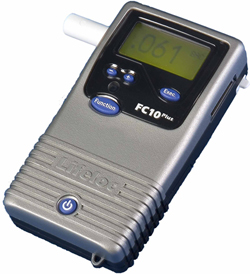Drunk Driving and Breath Testing

Prosecuting Guidelines for Evidentiary Breath Testing Machines ( EBTM)
1. General Guidelines for Prosecution in Drunk Driving Cases
1.1. The fact that neither a blood nor a breath sample can be obtained does not preclude a prosecution on a charge of driving under the influence, if other evidence is available. If, for example, a competent and knowledgeable officer on drunken driving cases is available as witness, his or her evidence may well suffice.
1.2. Section 37 of Act 51 of 1977 is not unconstitutional and accordingly an accused may not refuse that blood be drawn.
1.3. A traffic officer, appointed as a peace officer in terms of section 334 of the Criminal Procedure Act, 1977 (GKR. 159 Government Gazette 6295 2 February 1979, as amended) has for purposes of the CPA the same powers as a police officer. He may therefore request a doctor or registered nurse to draw blood.
1.4. If the holder of a Professional driving permit (Prdp) is charged for driving with excess alcohol in his blood or breath, whilst driving in circumstances where a Prdp is not required, he must be prosecuted for contravention of the section as a normal driver and not a professional driver. (After implementation of Section 65 of Act 93 of 1996).
2. Guidelines for Prosection with Evidentiary Breath Testing Machines
2.1. The equipment may only be operated by a registered traffic officer who must have passed an operator’s course for the particular model of the machine and must be issued with an operator’s certificate of competence.
2.2. The operator must keep in his/her possession the operator’s certificate for the equipment in question or a certified copy.
2.3 Only the equipment which complies with Regulation 332 of the Regulations in terms of the National Road Traffic Act may be used. Equipment must be calibrated at least once every six months by an accredited laboratory and a calibration certificate issued. A certified copy of the calibration certificate shall be available on site. Equipment that is outside the 6 month period must be recalibrated before it may be used for prosecution purposes.
2.4 After maintenance and repair of the equipment, it must be recalibrated.
2.5 All calibrations, maintenance and repairs shall be recorded in an appropriate equipment service record, which is kept for each unit.
[Information from Technical Committee for Standards and Procedures for Law Enforcement Equipment , November 2005]
Also visit the following sections:
|
|













